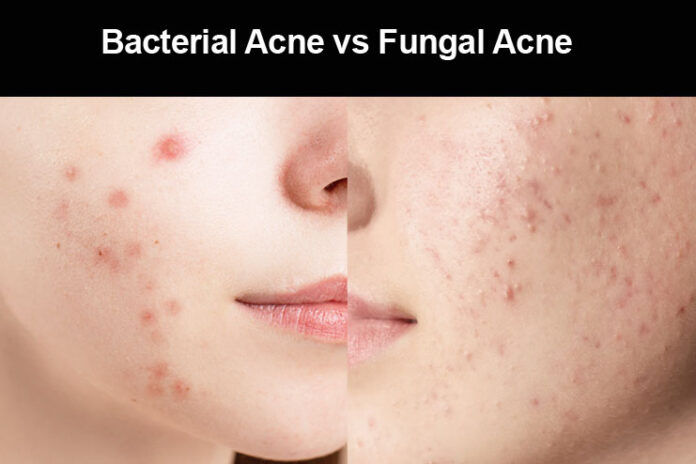AI Contribution
At HealthSpectra, we may use AI to refine grammar and structure, but every piece is shaped, checked, and approved by real people, our expert writers and editors, to ensure clarity, credibility, and care. Learn more..Affiliate Disclaimer
Some links in this article are affiliate links. We may earn a small commission if you make a purchase through these links, at no extra cost to you. We only recommend products we find useful to our readersNot all breakouts are the same—are your stubborn breakouts fungal or bacterial? Understanding the difference between these two common types of acne is critical for choosing the proper treatment. While both can cause frustrating blemishes, their causes, symptoms, and effective remedies are distinct.
This guide helps you differentiate between fungal and bacterial acne, empowering you to spot the difference and treat your skin for a healthier and more precise result.
Also Read: 26 Simple Ways to Treat Cystic Acne
What Is Fungal Acne?
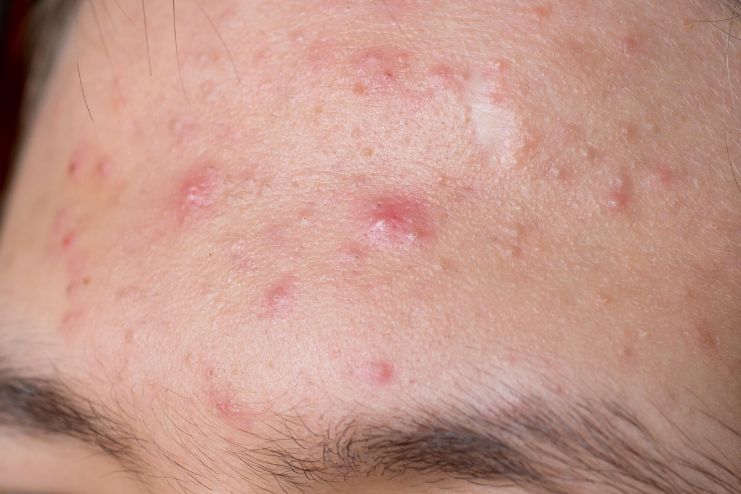
This skin condition is pityrosporum folliculitis or Malassezia folliculitis; it is fungal acne resulting from excessive multiplication of the yeast known as Malassezia. The yeast usually lives on the human skin, but an overgrowth develops and creates infection whenever hair follicles become blocked or compromised.
Unlike common acne, fungal acne takes the form of small, symmetrical bumps and often looks more like a rash. The bumps are usually itchy and group together in regions such as the chest, back, shoulders, and sometimes the face, mainly the forehead. Though it may look more like typical acne, its causative factor is entirely different.
Causes of Fungal Acne
The conditions that contribute to the occurrence of fungal acne include:
- Humidity and Sweat: Prolonged exposure to damp skin environments, especially after workouts or in hot climates.
- Tight Clothing: Non-breathable or tight fabrics that trap sweat and heat.
- Skincare Products: Overuse heavy, oily, or hair care products that clog pores.
- Antibiotic Use: Long-term antibiotics, particularly tetracyclines, can disrupt the skin’s natural balance, allowing yeast to thrive.
- Weakened Immune System: Conditions like diabetes or immunosuppressive treatments increase susceptibility.
Triggers of Fungal Acne
Some contributing factors include triggers that promote or worsen the development of fungal acne.
- Warm and damp exposure
- Excessive sweating
- Oil-based creams and products
- Tight or non-breathable clothing
- Antibiotic use for an extended period
- Poor hygiene
Symptoms of Fungal Acne
- Small, red, or flesh-colored bumps of the same size.
- Itching is usually more intense than with bacterial acne.
- Bumps in clusters often appear on the back, chest, shoulders, and upper arms.
- Sometimes, redness or a burning sensation is present in the affected areas.
What Is Bacterial Acne?
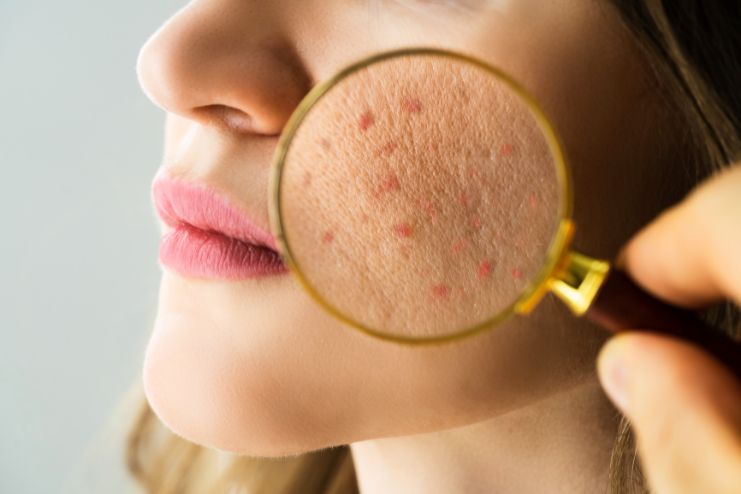
Bacterial acne is one of the most common forms of acne. It is primarily caused by an overgrowth of Propionibacterium acnes, which lives naturally on the skin. Bacterial acne affects regions with high numbers of oil glands, including the face, chest, back, and shoulders.
Unlike fungal acne, which is caused by yeast, bacterial acne is caused by the proliferation of bacteria in the hair follicles.
Causes of Bacterial Acne
Bacterial acne occurs when certain conditions are met to allow P. acnes to multiply and thrive, including:
- Overproduction of sebum
- Clogged hair follicles
- Inflammation
Common Triggers
Some habits, lifestyle, and conditions can lead to the onset of bacterial acne:
- Hormonal changes like puberty, menstruation, pregnancy, or conditions like PCOS
- High-glycemic foods and dairy
- Stress hormones such as cortisol
- Infrequent cleansing, using comedogenic products, or over-exfoliating
Symptoms and Appearance
Bacterial acne comes in different forms, such as:
- Whiteheads and blackheads
- Papules and pustules
- Nodules and cysts
Also Read: All You Need to Know About Acne Face Map
Key Differences Between Fungal and Bacterial Acne
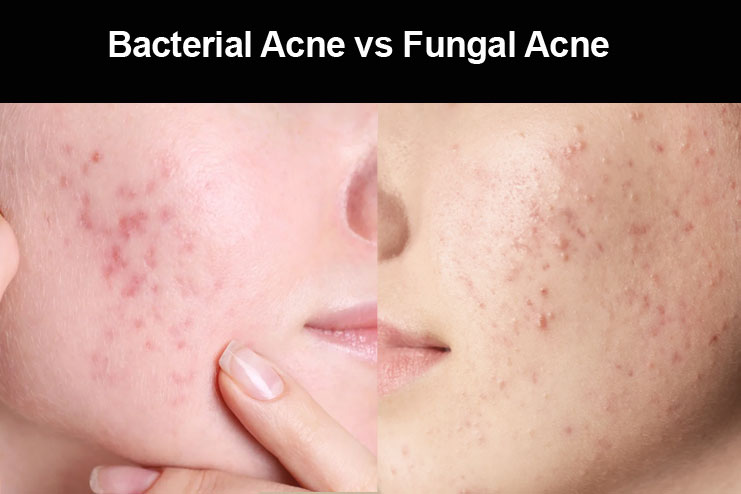
How can I distinguish fungal acne from bacterial acne? Understanding the differences between fungal and bacterial acne is the key to correct diagnosis and proper treatment. Although the symptoms of the two conditions resemble acne, they have different underlying causes, appearances, and treatment approaches.
1. Cause
- Fungal Acne: A condition caused by yeast overgrowth on the skin that leads to inflammation in the hair follicle.
- Bacterial Acne is the proliferation of bacteria (Propionibacterium acnes, now known as Cutibacterium acnes) in the pores.
2. Appearance
- Fungal Acne:
- Appearance: small, uniform, red bumps
- Itchy and tends to appear in clusters
- Seldom causes whiteheads, blackheads, or large pustules
- Bacterial Acne:
- A variety of lesions, such as whiteheads, blackheads, papules, pustules, nodules, and cysts
- It tends to be inflamed, with redness around the lesions
- It can be painful and lead to scarring
3. Location
- Fungal Acne: Common areas affected include the chest, back, shoulders, and occasionally the forehead, where sweat and oil accumulate.
- Bacterial Acne: Predominantly occurs on the face, neck, shoulders, and upper back, although it can appear elsewhere.
4. Triggers
- Fungal Acne:
- High humidity and excessive sweating
- Use of heavy, oily skincare products
- Wearing tight, non-breathable clothing
- Prolonged use of antibiotics disrupts the skin’s natural balance
- Bacterial Acne:
- Hormonal fluctuations (e.g., puberty, menstruation, pregnancy)
- High-glycemic diets or excessive dairy intake
- Stress and poor skincare practices
- Genetics or family history of acne
Diagnosing the Right Type of Acne
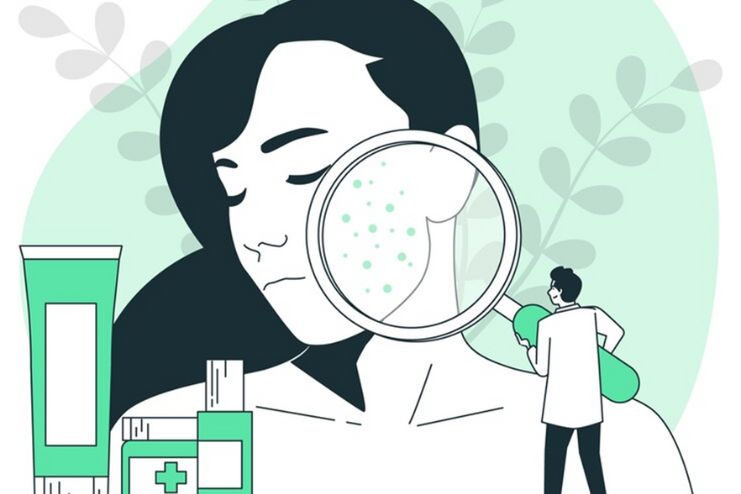
Accurate diagnosis of the type of acne is essential to determine the appropriate treatment. There are various types of acne, including bacterial and fungal acne, with different causes, symptoms, and treatments. Here’s how healthcare providers usually diagnose acne:
1. Patient History
Your doctor will first gather important information about your acne, such as:
- Family History: A history of acne may suggest a genetic predisposition.
- Menstrual Cycle (for women): Fluctuations in hormones, such as during menstruation, can trigger acne.
- Duration of Acne: How long you’ve had acne can help determine the severity and the possible underlying cause.
- Medications: Some medications, especially antibiotics, may influence acne development. The doctor will ask about current or recently discontinued medicines that may be contributing to the problem.
2. Physical Examination
Your doctor will examine your skin in detail to assess the nature of your acne lesions. This will help distinguish between bacterial acne, characterized by whiteheads, blackheads, papules, and pustules, and fungal acne, which often appears as uniform, itchy bumps, primarily on the chest, back, and shoulders.
3. Laboratory Tests
In some cases, further testing may be required to ensure an accurate diagnosis:
- Skin Culture: A swab from the affected area can be tested to determine whether Malassezia yeast (causing fungal acne) or Propionibacterium acnes bacteria (causing bacterial acne) is present.
- Blood Tests: These may be conducted to rule out any underlying conditions, such as hormonal imbalances or other medical disorders, contributing to acne flare-ups.
4. Additional Tests
In some cases, especially for complicated cases, doctors may advise:
- Biopsy: A small sample of the skin may be taken to help identify the specific type of microorganism causing acne.
- Skin Scraping: This can help diagnose fungal acne by looking for yeast in the skin.
Fungal Acne Treatments
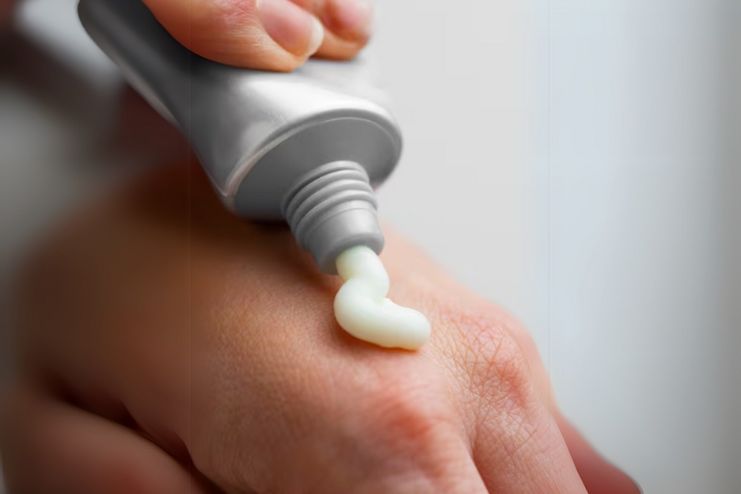
Fungal acne, also called Malassezia folliculitis, results from excessive growth of yeast known as Malassezia, which feeds on skin regions that produce excess oil.
For fungal acne to be treated appropriately, it would need antifungal treatments combined with changes in skincare routines. Here’s how to treat fungal acne effectively:
1. Topical Antifungal Treatments
Topical antifungal medications are the first line of treatment for fungal acne. They come in various forms, such as creams, gels, and shampoos. Some of the key ingredients to look for include:
- Ketoconazole: An antifungal agent used to treat fungal skin infections, including fungal acne.
- Selenium Sulfide: This is an agent that reduces the growth of Malassezia
- Clotrimazole: This topical antifungal agent helps control yeast overgrowth on the skin.
- Terbinafine: This drug is available in topical and oral preparations. It inhibits the growth of yeast.
Depending on the severity, these can be applied topically to the affected areas, usually twice daily. They reduce the yeast population on the skin and prevent flare-ups.
2. Oral Antifungal Medications
In the case of fungal acne, the disease can be treated orally by prescription antifungals for severe or persistent infections. Some examples include:
- Fluconazole: The most commonly used oral antifungal that operates through the whole body to stop yeast growth
- Itraconazole: This oral antifungal will remove any deeply embedded fungus.
Oral antifungals are taken for a few weeks and act on Malassezia overgrowth, not only on the skin but all over the body.
3. Skincare Routine Adjustments
Aside from antifungals, a change in the skincare routine may also help manage and treat fungal acne breakouts:
- Avoid Oily Products: Heavy, oily skincare or hair care products can feed Malassezia, worsening fungal acne. Instead, use non-comedogenic (oil-free) products that won’t clog pores.
- Shower After Sweating: Sweat creates a moist environment that encourages yeast growth. Shower promptly after exercise or sweating, and use a gentle, antifungal body wash if necessary.
- Use Mild, Non-Abrasive Cleaners: Harsh cleaners irritate the skin and exacerbate fungal acne. To avoid irritation, use a mild, fragrance-free cleanser.
- Exfoliate Mildly: Regular exfoliation may remove dead skin cells from pores and help eliminate the possibility of creating fungal build-up. Avoid excessive exfoliation to prevent irritation to the skin
4. Lifestyle and Environmental Modifications
Flare-ups of fungal acne may result from several lifestyle factors and environmental conditions. Consider these changes to prevent future occurrences.
- Wear Breathable Clothing: Tight, non-breathable fabrics trap heat and moisture, providing an ideal environment for the growth of Malassezia. Choose loose-fitting, moisture-wicking clothing, especially after exercising.
- Keep Skin Dry: Fungal acne thrives in damp environments, so it’s vital to keep the skin dry, particularly in areas prone to sweating.
- Limit Humidity: If you live in a hot, humid climate, minimize prolonged exposure to such conditions. Using fans or air conditioning can help prevent excessive moisture on the skin.
5. Diet and Supplements
Though diet isn’t the root of fungal acne, your eating habits might relate to the quality of your skin. Yeasts love sugar, and they go wild over even more processed stuff like refined carbs, so an adjustment to foods like that will be a welcome addition in working with the prevention of fungal acne. Many find relief for their fungal acne with some probiotics and antifungals.
Also Read: 5 Home Remedies for Acne and Pimples
Bacterial Acne Treatments
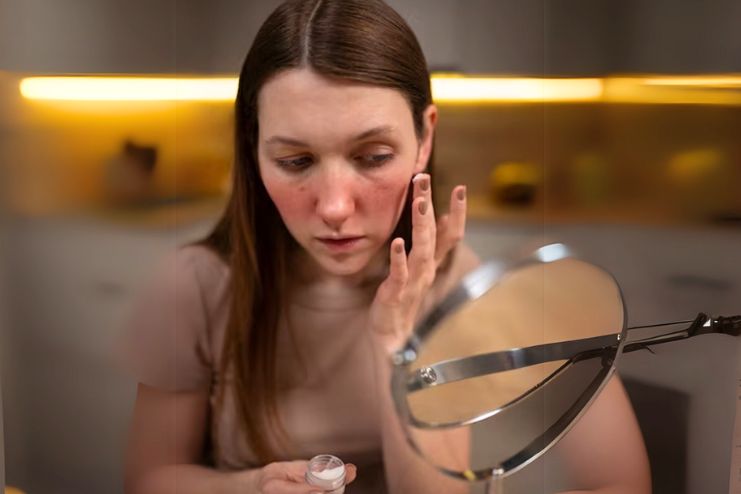
Bacterial acne is a condition characterized mainly by the overproduction of Propionibacterium acnes. This usually causes pores to clog, leading to inflammation and the appearance of lesions in the form of whiteheads, blackheads, pustules, and cysts.
Bacterial acne treatment deals with the underlying bacterial overproduction reduces inflammation, and promotes healthy skin turnover. Here are the effective methods for treating bacterial acne:
1. Topical Treatments
Topical treatments are the first line of defense against bacterial acne. They target the bacteria, reduce inflammation, and prevent pores from clogging. Some of the standard topical treatments include:
- Benzoyl Peroxide: This standard treatment kills acnes bacteria, reduces oil production, and prevents pores from clogging. It comes in different strengths, ranging from 2.5% to 10%, and is available in gels, creams, and washes.
- Salicylic Acid: A beta-hydroxy acid (BHA) that exfoliates the skin, opens pores and reduces inflammation. Salicylic acid is suitable for mild to moderate acne and is found in cleansers, toners, and spot treatments.
- Retinoids: Topical retinoids, such as tretinoin or adapalene, prevent pores from becoming clogged, reduce inflammation, and promote cell turnover. They are prescribed for moderate to severe acne, improving skin texture and reducing scarring over time.
- Sulfur: This ingredient has antibacterial properties and helps treat acne by reducing oil production and promoting the shedding of dead skin cells.
- Antibiotics (Topical): Clindamycin or erythromycin can be used topically to limit bacterial growth and inflammation. Topical antibiotics are often used with other treatments, like benzoyl peroxide, to prevent antibiotic resistance.
2. Oral Medications
For more serious cases of bacterial acne, the infections are too deep and the inflammation too widespread, for topical treatments. Oral medications can be prescribed, including:
- Oral Antibiotics: Drugs like doxycycline, minocycline, or tetracycline help kill P. acnes bacteria and reduce inflammation. These are typically prescribed for moderate to severe acne and are used for a limited time to prevent antibiotic resistance.
- Oral Retinoids: Isotretinoin is a potent oral retinoid used for severe acne that is not responsive to other treatments. It works by shrinking oil glands, reducing oil production, and preventing pores from becoming clogged. It is very effective but has potential side effects, so it needs to be closely monitored by a dermatologist.
- Hormonal Therapy: For females, hormonal therapy includes birth control pills that regulate androgens. This can reduce oil production, thereby controlling acne.
- Anti-androgen Drugs: Anti-androgen drugs such as spironolactone may also be prescribed to decrease the impact of male hormones on sebaceous glands.
- Corticosteroids: Oral or injectable corticosteroids may reduce swelling and redness in cases of severe inflammation, especially in cystic acne.
3. Skincare Routine Adjustments
Along with appropriate drugs, adjustment of your daily regimen of skin care is vital in the management of bacterial acne:
- Cleanse Gently: Use a mild, non-comedogenic cleanser twice daily and avoid hard scrubbing.
- Exfoliate Wisely: Choose products containing gentle exfoliating agents, such as salicylic acid or alpha-hydroxy acids.
- Use Non-comedogenic Products: Moisturizers, sunscreens, and makeup labeled “non-comedogenic” should be used.
- Avoid Touching Your Face: Wash your hands frequently and avoid squeezing pimples.
4. Lifestyle Modifications
Several lifestyle changes can help improve acne management:
- Diet
- Manage stress
- Sufficient sleep
5. Advanced Treatments
When topical and oral treatments are not effective, other treatments may be added:
- Light and Laser Therapy: Blue light therapy targets P. acnes bacteria, and laser treatments help reduce inflammation and improve acne conditions. These treatments are usually given by a dermatologist.
- Chemical Peels: Superficial chemical peels, performed with salicylic or glycolic acids, exfoliate the skin, clear pores, and reduce acne lesions. These treatments are professionally performed.
- Corticosteroid Injections: A significant, painful cystic acne may be treated with direct corticosteroid injections by a dermatologist to minimize inflammation and promote healing
- Microneedling: Stimulates collagen with the use of a thousand tiny needles for acne scar improvement
Preventing Future Breakouts
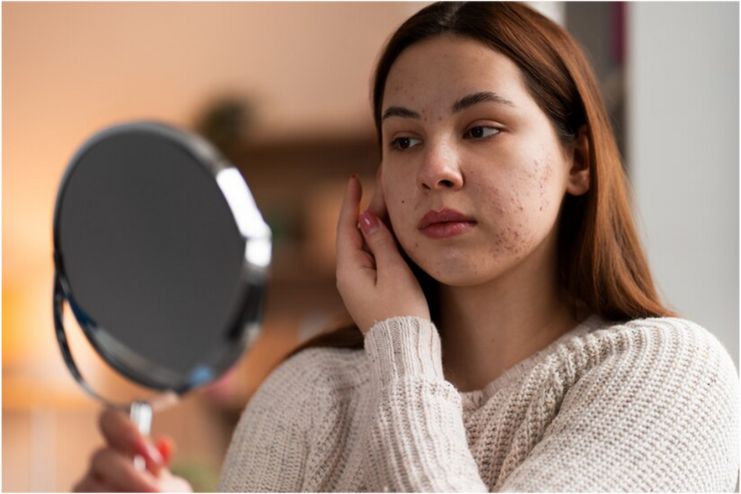
Preventing Future Fungal Acne Breakouts
To avoid fungal acne, minimize the conditions that allow yeast to multiply:
- Practice good hygiene
- Wear breathable clothing
- Avoid heavy, oily products
- Manage sweating
- Minimize antibiotic exposure
Preventing Future Bacterial Acne Breakouts
To decrease the risk of bacterial acne, take measures that control oil, bacteria, and inflammation:
- Wash your face often
- Use oil-free cosmetics
- Avoid touching your face
- Practice stress management techniques
- Do not pick or squeeze pimples
Conclusion
Fungal and bacterial acne look the same but have different causes, symptoms, and treatments.
Fungal acne is caused by an overgrowth of yeast, leading to small, itchy bumps that are often symmetrical and occur in areas prone to sweat and oil.
On the other hand, bacterial acne results from bacteria causing clogged pores and inflammation, including a broader range of lesions, such as whiteheads, pustules, and cysts.
Understanding the differences between the two is essential for effective treatment.
The presence of a dermatologist ensures that all the proper medications, from antifungal creams to oral drugs meant for fungal acne, are used.
For bacterial acne, this would involve antibiotics and topical treatments. Control and prevention of breakouts through knowledge about skincare routines, changes in lifestyle, and environmental factors are also believed to boost the prospects of healthier and clearer skin and reduced occurrences in the future.
References
- https://www.webmd.com/skin-problems-and-treatments/acne/what-is-fungal_acne
- https://www.medicalnewstoday.com/articles/316803#Results-could-lead-to-personalized-acne-treatments
- https://naturalimageskincenter.com/fungal-acne-vs-bacterial-acne-whats-the-difference/
- https://www.niams.nih.gov/health-topics/acne/diagnosis-treatment-and-steps-to-take
In this Article
















